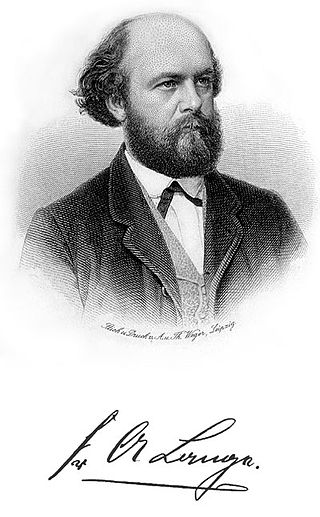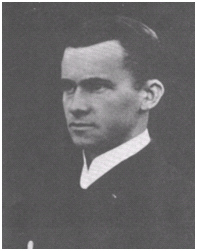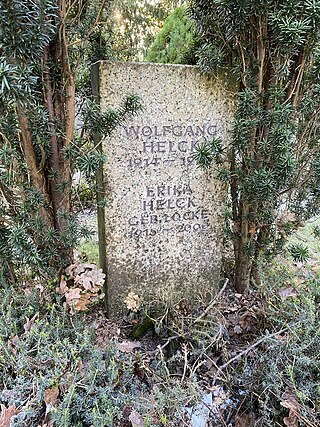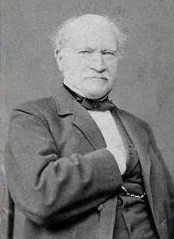Related Research Articles

Friedrich Albert Lange was a German philosopher and sociologist.
Heidesheim am Rhein is an Ortsbezirk (borough) of the town Ingelheim am Rhein in the Mainz-Bingen district in Rhineland-Palatinate, Germany. Before July 2019, it was a separate municipality belonging to the former Verbandsgemeinde Heidesheim am Rhein, of which it was the administrative seat. Heidesheim was one of the biggest municipalities in Rhenish Hesse.

Heinrich John Rickert was a German philosopher, one of the leading neo-Kantians.

The Berlin Observatory is a German astronomical institution with a series of observatories and related organizations in and around the city of Berlin in Germany, starting from the 18th century. It has its origins in 1700 when Gottfried Leibniz initiated the "Brandenburg Society of Science″ which would later (1744) become the Prussian Academy of Sciences. The Society had no observatory but nevertheless an astronomer, Gottfried Kirch, who observed from a private observatory in Berlin. A first small observatory was furnished in 1711, financing itself by calendrical computations.
Die Fragmente der griechischen Historiker, commonly abbreviated FGrHist or FGrH, is a collection by Felix Jacoby of the works of those ancient Greek historians whose works have been lost, but of which we have citations, extracts or summaries. It is mainly founded on Karl Wilhelm Ludwig Müller's previous Fragmenta Historicorum Graecorum (1841–1870).

Göttweig Abbey is a Benedictine monastery near Krems in Lower Austria. It was founded in 1083 by Altmann, Bishop of Passau.

Jakob Georg Christian Adler was a Danish-German Generalsuperintendent for Holstein and Schleswig, Orientalist, Syriac language professor at the University of Copenhagen, Lutheran theologian, Oberkonsistorialrat, book writer, religious educator, coin collector and head of the Schleswig-Holsteinische Bibelgesellschaft.

Wolfgang Kraushaar is a political scientist and historian. After a residency at the Hamburger Institut für Sozialforschung from the 1980s until 2015. In 2015 he continued his research at the Hamburg Foundation for the Promotion of Science and Culture also in Hamburg, Germany.

Hans Paasche was a German politician and pacifist. He was the son of the Reichstag vice president Hermann Paasche and Lisi Paasche, and was married to Gabriele (Ellen) Witting.

The Weimar edition of Luther's works, also known as the Weimarer Ausgabe (WA), is a critical complete edition of all writings of Martin Luther and his verbal statements, in Latin and German. The official title of this edition is D. Martin Luthers Werke: kritische Gesammtausgabe. Also included are Luther's Table Talk (Tischreden), Letters (Briefe), and Bible Translation. The three subseries are numbered separately.

Hans Wolfgang Helck was a German Egyptologist, considered one of the most important Egyptologists of the 20th century. From 1956 until his retirement in 1979 he was a professor at the University of Hamburg. He remained active after his retirement and together with Wolfhart Westendorf published the German Lexikon der Ägyptologie, completed in 1992. He published many books and articles on the history of Egyptian and Near Eastern culture. He was a member of the German Archaeological Institute and a corresponding member of the Göttingen Academy of Sciences.

The Steinfurter Bagno is a park near the town of Burgsteinfurt in the German state of North Rhine-Westphalia.
Horst Wolfgang Böhme is a German archaeologist with a focus on Late Antiquity / Early Middle Ages and research into castles.

Dr. Willy Cohn was a German historian and teacher. During the Nazi era, he documented the Jewish life in Breslau in his diaries, until he and his family were deported to German-occupied Lithuania and killed.

Wolfgang Händler was a German mathematician, pioneering computer scientist and professor at Leibniz University Hannover and University of Erlangen–Nuremberg known for his work on automata theory, parallel computing, artificial intelligence, man-machine interfaces and computer graphics.

Fritz Roeber was a German illustrator, lithographer and history painter, associated with the Düsseldorfer Malerschule. As Director of the Kunstakademie Düsseldorf, he carried out some significant organizational changes.

Berlin memorial plaque is a special form of commemorative plaque, made by the Royal Porcelain Factory, in Berlin that was introduced in 1985 in preparation for the city's 750th anniversary in 1987. The porcelain-coloured panels have a rectangular shape measuring 60 by 40 centimetres and bear the title "Berlin Memorial Plaque" in capital letters and a cobalt blue explanatory inscription on a white background. The factory logo is present at the base of the panel, in the form of a cobalt blue sceptre. The design was determined in a competition that was won by the graphic artist Wieland Schütz.

Carl Eduard Steinbrück was a German history painter and etcher; associated with the Düsseldorf school.

The Schaffhausen massacre was an anti-Semitic episode in Schaffhausen, in present-day Switzerland, which occurred in 1401. An episode of antisemitism had already occurred in Schaffhausen 52 years prior, when the local Jews were accused of well poisoning and burned alive on 22 February 1349. On this occasion, the Jews were accused of the murder of a four-year-old boy, Konrad Lori from Diessenhofen. "Confessions" were obtained from them under torture, and on 25 June 1401 they were executed by burning.
References
- ↑ Pressemitteilung Nr. 606 vom 21.09.2019: Gedenktafel für Julius Lange enthüllt https://www.potsdam.de/606-gedenktafel-fuer-julius-lange-enthuellt
- ↑ "Julius Gustav Lange - Potsdam-Chronik".
- ↑ "Numismatische Gesellschaft zu Berlin e.V."